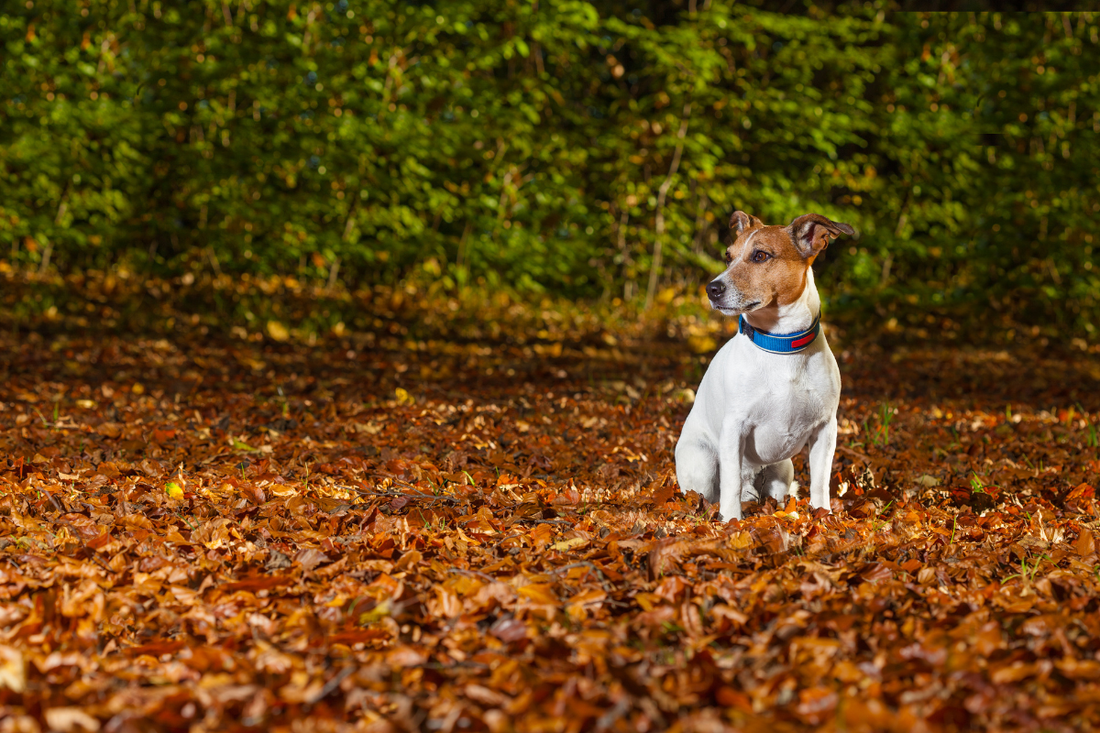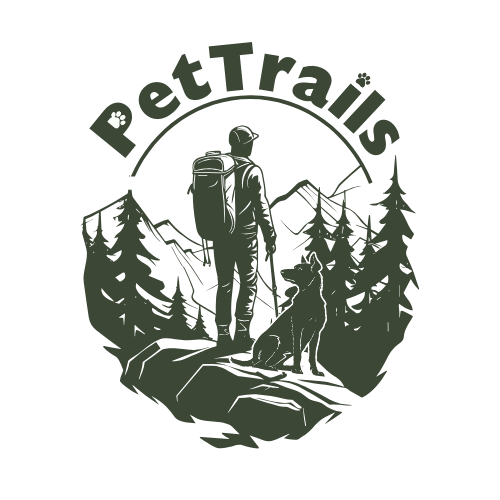
Autumn Trail Hazards for Dogs: What to Watch for This Fall
Share
Crisp air, vibrant colors, and quieter trails make fall one of the best times to hike with your dog. But while the season offers plenty of beauty, it also brings unique risks that can catch even experienced hikers off guard.
Whether you’re exploring local trails or venturing deep into the backcountry, it’s important to understand the seasonal hazards that could affect your dog’s safety and comfort. This guide outlines the most common fall trail dangers and offers clear, actionable tips to help you prepare.
1. Toxic Mushrooms and Plants
Fall is peak season for many mushroom species, and while most are harmless, a few can be extremely toxic to dogs. Mushrooms often thrive in damp, shaded areas along trails and under leaf litter, making them easy for curious dogs to sniff out and eat before you even notice.
What to Watch For:
- Mushrooms growing along trail edges or in wooded areas
- Leaf piles or decomposing logs where fungi tend to grow
- Symptoms of mushroom poisoning: vomiting, lethargy, diarrhea, tremors, seizures
What You Can Do:
- Keep your dog on a short leash in high-risk areas
- Don’t allow foraging or unsupervised sniffing near logs or stumps
- Learn to identify a few of the most dangerous mushrooms common in your region, such as Amanita species (like the “Death Cap” or “Destroying Angel”)
- Use region-specific mushroom ID resources or local extension services to stay informed
- If ingestion occurs, contact your vet or an emergency poison hotline immediately
2. Hidden Dangers Under Leaves
Fallen leaves may seem harmless, but they can hide sharp sticks, uneven terrain, discarded trash, or even injured wildlife. Wet leaves can also become slippery, increasing the risk of joint strain or paw injuries.
What You Can Do:
- Stay on marked trails whenever possible
- Avoid allowing your dog to dig or pounce in deep leaf piles
- Inspect paws after hikes for cuts, debris, or lodged objects
- Consider lightweight dog boots for added paw protection if terrain is rough or slick
3. Ticks and Fleas Are Still Active
Many dog owners believe that tick and flea season ends with summer, but these parasites can remain active well into fall, especially in warmer climates or during mild autumns. Ticks are particularly active in leaf litter and tall grasses, where they wait to latch onto passing animals.
What You Can Do:
- Continue using veterinarian-recommended flea and tick preventatives year-round
- Perform a full-body tick check after every hike, including ears, paws, and under the collar
- Avoid overgrown trail edges and choose well-maintained paths when possible
4. Sudden Weather Changes
Fall weather can shift quickly, especially in mountainous or forested areas. A sunny morning can turn into a cold, wet afternoon, which can be dangerous for dogs not properly insulated or hydrated.
What You Can Do:
- Pack appropriate layers for your dog based on the forecast
- Coats are typically helpful for short-haired, small, senior, or thin-bodied dogs in temperatures below 45–50°F
- In wet or windy conditions, even active breeds may benefit from an extra layer
- Always bring extra water; hydration needs remain high even in cooler weather
- Monitor your dog for signs of cold stress such as shivering, reluctance to move, or stiff joints
5. Hunting Season Hazards
In many regions, fall also means the start of hunting season. Dogs can be mistaken for wildlife if not clearly visible, and the sound of gunfire can cause stress or confusion.
What You Can Do:
- Check local regulations to see if hunting is allowed on or near your hiking route
- Equip your dog with a blaze orange vest or bandana to ensure high visibility
- Keep dogs leashed and under control at all times, especially in shared-use areas
6. Fall Allergens and Mold
Decomposing leaves can harbor mold spores that may trigger allergic reactions in some dogs. Common symptoms include sneezing, itching, red eyes, and skin irritation.
What You Can Do:
- Wipe down your dog’s coat and paws after hikes to remove allergens
- Bathe your dog more frequently during heavy mold seasons if symptoms arise
- Consult your vet if you notice persistent allergy signs
7. Shorter Daylight Hours
As days get shorter, it’s easier to misjudge timing and end up hiking after dark. This increases the risk of injury and makes it harder to keep track of your dog, especially in wooded areas or on off-leash trails.
What You Can Do:
- Start hikes earlier in the day to avoid being caught out after sunset
- Use LED collar lights or attachable lights to your dog’s harness
- Always carry a flashlight or headlamp, even for short afternoon hikes
Trail Safety Recap for Fall Hiking
Every dog and trail is different, but a little planning can go a long way toward making your autumn hikes safer and more enjoyable. Here are some helpful reminders to consider before and after your hike.
Before You Head Out:
- Check trail rules and weather conditions, especially in areas with fluctuating fall temperatures or hunting seasons
- Bring gear appropriate for the day’s forecast, including water, extra layers, or paw protection
- Carry a small dog-specific first aid kit with essentials like tweezers, antiseptic wipes, bandage wrap, and styptic powder for minor injuries
- Take a quick look at your dog’s harness, leash, and other gear to ensure good fit and condition
- Make sure your dog is wearing visible ID tags. If you use microchipping or GPS trackers, verify they're current
After the Hike:
- Do a thorough check for ticks, cuts, or any burrs or debris in your dog’s coat and paws
- Give paws a quick clean to remove mud, allergens, or trail residue
- Watch for signs of fatigue, stiffness, or digestive upset, especially after longer or more strenuous hikes
The Bottom Line
Fall is a great season to hit the trail with your dog, but it demands a bit more awareness and preparation. By staying alert to seasonal hazards like toxic mushrooms, ticks, hidden debris, and sudden weather changes, you can keep your hikes both safe and enjoyable.
Don’t let preventable problems ruin your fall hiking season. A few extra precautions can go a long way toward protecting your pup while enjoying everything autumn has to offer.
What fall challenges have you encountered on the trail with your dog? Share your tips or questions in the comments, we’d love to hear from fellow hikers.
